

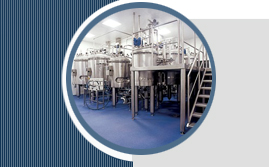

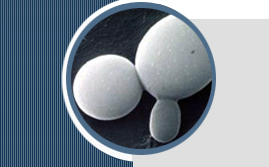

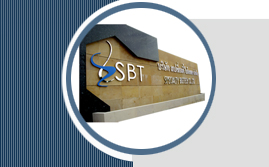

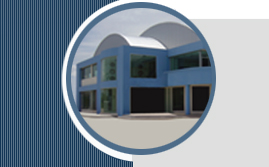
Food application-Preparation of spent brewer’s yeast ß-glucans for potential applications in the food industry . (For more detail please visit http://www.blackwellpublishing.com/journal.asp?ref=0950-5423)Preparation of spent brewer’s yeast ß-glucans for potential applications in the food industrySaowanee Thammakiti, Manop Suphantharika, Thanaporn Phaesuwan & Cornel VerduynDepartment of Biotechnology, Faculty of Science, Mahidol University, Rama 6 Road, Bangkok 10400, Thailand ABSTRACTA preparation of ß -glucan, obtained from spent brewer’s yeast, was evaluated for potential food applications. This material was autolysed and the cell walls that were obtained were homogenized, extracted firstly with alkali, then with acid, and then spray dried. Effects of the homogenization on the chemical composition, rheological properties and functional properties of ß -glucan were investigated. Homogenized cell walls exhibited higher ß -glucan content and apparent viscosity than those which had not been homogenized because of fragmentation of the cell walls. When compared with commercial ß -glucan from baker’s yeast, it was found that the b -glucan obtained from this study had higher apparent viscosity, water-holding capacity and emulsion stabilizing capacity, but very similar oilbinding capacity. These findings suggest that b -glucan obtained from brewer’s yeast can be used in food products as a thickening, water-holding, or oil-binding agent and emulsifying stabilizer. Keywords: Apparent viscosity, baker’s yeast, chemical composition, emulsion stabilizing capacity, oil binding capacity, water holding capacity. Credited by:
-Plasma lipid changes after supplementation with ß-glucan fiber from yeast. (For more detail please visit http://www.ajcn.org/ ) Pasma llipid changes after supplementation with ß-glucan fiber from yeastRobert Nicolosi, Stacey J Bell, Bruce R Bistrian, Isaac Greenberg, R Armour Forse and George L Blackburn From the Center for Cardiovascular Disease Control, University of Mas-sachusetts–Lowell; Research and Development, Medical Foods, Inc, Cambridge, MA; the Department of Psychiatry and the Nutrition and Infection Laboratory, Harvard Medical School; the Centers for the Study of Nutrition and Medicine and for Nutritional Research, and Clowes Surgical Metabolism Laboratory, Beth Israel Deaconess Medical Center, Boston. Background: Dietary fiber has been shown to improve blood lipids. Objective: The purpose of this study was to evaluate the effect on serum lipids of a yeast-derived ß-glucan fiber in 15 free-living, obese, hypercholesterolemic men. Design: After a 3-wk period in which subjects ate their usual diet, 15 g fiber/d was added to the diet for 8 wk and then stopped for 4 wk. Plasma lipids were measured weekly during baseline and at week 7 and 8 of fiber consumption, and again at week 12. Results: Compared with baseline, fiber consumption significantly reduced plasma total cholesterol (by 8% at week 7 and 6% at week 8; P < 0.05 using Bonferroni correction); week 12 values did not differ from baseline. No significant differences were noted between baseline LDL cholesterol and values at weeks 7, 8, or 12 when comparing individual groups by using Bonferroni correction, even though the overall one-way analysis of variance with repeated measures was highly significant (P < 0.001). LDL-cholesterol concentrations did decline by 8% at week 8 compared with baseline. There was a significant effect of diet on plasma HDL-cholesterol concentrations (P < 0.005 by one-way ANOVA with repeated measures). However, a group difference was observed only between baseline and week 12 (16% increase; P < 0.05 by Bonferroni correction). Triacylglycerol concentrations did not change. Conclusions: The yeast-derived ß-glucan fiber significantly lowered total cholesterol concentrations and was well tolerated; HDL-cholesterol concentrations rose, but only 4 wk after the fiber was stopped. Keywords: ß -glucan, dietary fiber, oat fiber, serum cholesterol, low-density-lipoprotein cholesterol, high density lipoprotein cholesterol, HDL cholesterol, LDL cholesterol Credited by:
Wound treatment -Effectiveness of Beta-Glucan Collagen for Treatment of Partial-Thickness Burns in Children. (For more detail please visit http://www.elsevier.nl/locate/jpedsurg)
|
||
| |
|
||||
 |
 |
|
|||
| |
|||||
| |
|
||||
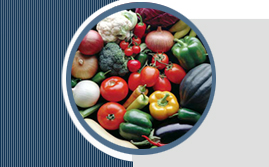 |
|
||||
Copyright ©2005 . Specialty Biotech Co.,Ltd. All Rights Reserved. Amatanakorn Industrial Park 700/137 Moo 5, Klongtumroo Muang, Chonburi 20000 ThailandTel +66 (0)3845-8698 Fax +66 (0)3845-8697 Email: contact@sbtthai.com | |
||||
| |
|
||||
| |
|||||
| |
|||||
| |
|
|
|||
| |
|
||||
| |
|
||||
 |
|
||||
|
|
||||